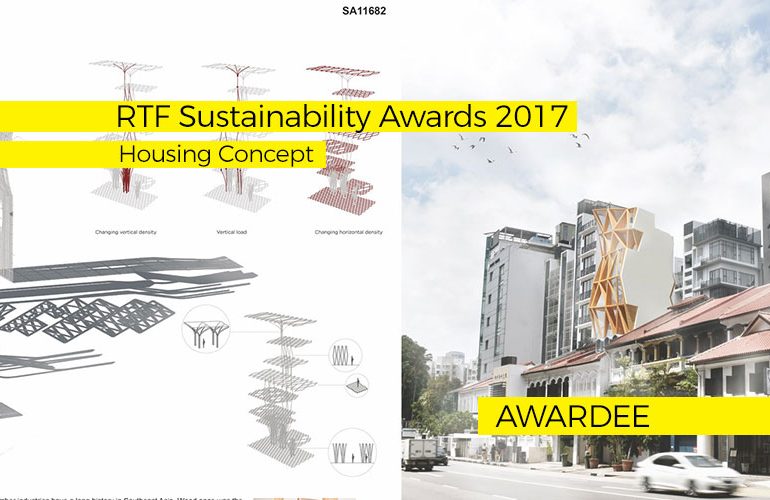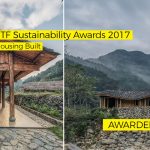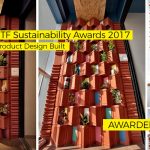The design study responds to the challenge of RETHINKING THE FUTURE by focusing on wood as a renewable material and on the design of micro-towers in a tropical city in Southeast Asia. Most of the fastest growing cities in the tropics have expanded with massive consumption of concrete, steel and other non-renewable materials. However, society is increasingly challenged by a scarcity of material resources. Recently, wood has resurfaced as an attractive alternative with the invention of new manufacturing and construction methods. It offers manifold potentials if applied wisely – wood is a renewable material and can have a significantly lower impact on the environment than most of the materials currently in use.
RTF Sustainability Awards 2017
First Award | Category: Housing (Concept)
Architect: Michael Budig
Team Members: Caroline Yong Zhen Hui, Jing Zhi Tay Lim Wei Guo Christyasto Priyonggo Pambudi Goh Wei Hern Soh Hui Min Nurul Marsya Binte Mohd Shahruddin
Country: Singapore

The design studies investigate in alternative construction methods, inspired by the idea of re-inventing wood construction and revitalising a dormant industry sector that has disappeared from urban construction. Wood, composite materials and hybrid construction systems are explored to envision new concepts of vertical construction. The studies aim is to unlock the enormous potential of wood for future applications by recording a material and craft with a long history (wood is one of the oldest materials in use for building), re-conceptualising it and projecting the recordings into entirely new concepts. The concepts go beyond using wood as conventional straight and planar elements by exploring bending, peeling of layers, fractal formations, and form-active behaviour.

Big ideas on tiny footprints: the design study is developed into a series of small towers on a site behind a row of preserved shophouses. The site offers a unique situation with narrow plots adjacent to the backsides of traditional typologies and the possibility of building up to 10 storeys high. A few of these plots are still empty, others have already taken advantage of densifying the available land. We designed a series of inspiring micro-towers for this area. The programmes correlate with innovative spatial arrangements challenging the notion of a sliced space with a vertical array of horizontal plates – spaces have unconventional vertical relations and are as high as the entire 10 stories in the most extreme cases.

Design methodology
The ‘digital turn in architecture’ (Mario Carpo 2010) has brought along radical changes in the architectural design process. One of these changes is a shift from typologies to topologies (Schumacher 2008) – a shift of interest away from highly specific and mono-functional types (typology) that are reproduced in a mode of simple repetition. The attention turned towards topological components that can be parametrically varied and optimised to different conditions. The design study utilises parametric design and digital fabrication tools and provides a framework for intensive physical testing and prototyping.

Material
The timber industries have a long history in Southeast Asia. Wood once was the predominant material used in construction and this was especially so when wood as a resource was available in abundance. With the advancement of modern construction materials such as concrete and steel and their efficient production processes and consistent properties, the timber industries went into decline and eventually vanished. However, newer technologies take advantage of the machinability of wood and the ease it offers to build almost any shapes.
If you’ve missed participating in this award, don’t worry. RTF’s next series of Awards for Excellence in Architecture & Design – is open for Registration.
Click Here








